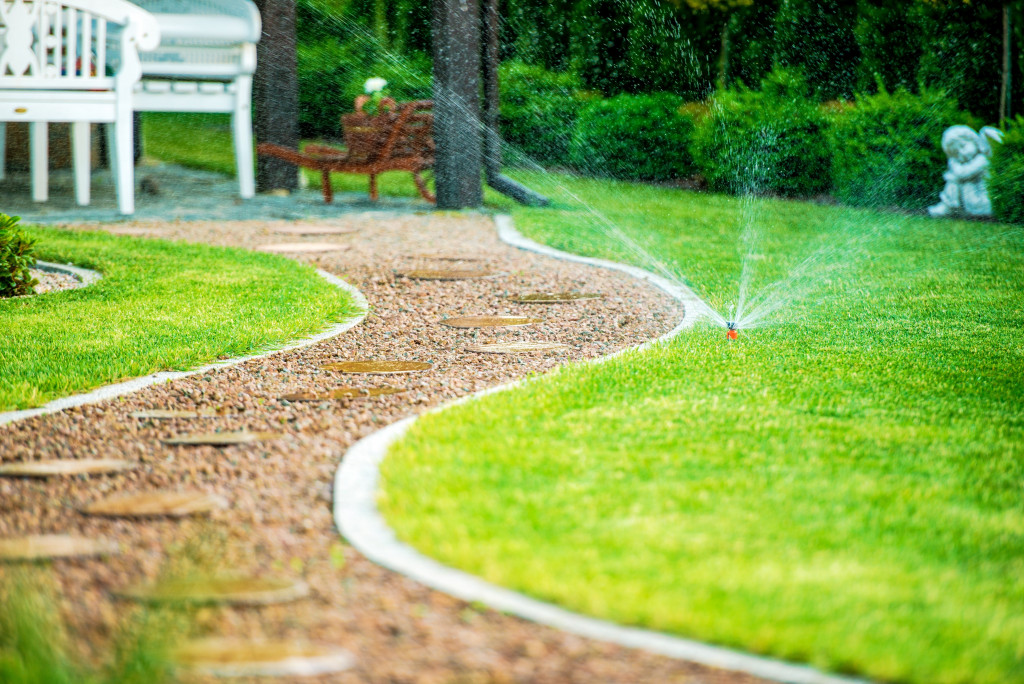Landscaped gardens can boost the property’s curb appeal and potentially raise its value, making it an attractive project for those planning to sell their home or building soon. However, until someone buys it, you are in charge of maintaining the landscape — and it rarely comes cheap.
According to estimates, a landscaped garden may cost around $200 a month to maintain. It can be significantly higher when it covers a wider or bigger space, such as in an estate or commercial establishment, or when two or more people need to work on it each time.
Doing away with a landscaped garden is not the solution. Instead, find ways to make it more cost-effective, beginning with these ideas:
1. Use a Combination of Mulch and Stone
A mulch is an organic material with many purposes. It can serve as an alternative to chemical fertilizer to promote the healthy growth of plants. Mulch can also retain the moisture of the soil, which helps reduce the need to water the area continuously.
Moreover, mulching can control or eliminate the appearance of weeds. It may maintain the right temperature unideal for weed growth and, thus, prevent its germination.
Mulch, though, can introduce problems. One, because of the materials they use, they can attract insects and pests. Overdoing may also only cause fungal diseases because it creates an anaerobic (lack of oxygen) to plants. In some cases, it can be dangerous, leading to spontaneous combustion.
As an alternative, landscaped gardens can use rock boulders and stones, especially if the goal is to control weeds. They are also ideal to use for plants that don’t need a lot of watering since these materials don’t absorb water and retain soil moisture.
Depending on where the property owner lives, they may need to combine mulching and stones. For example, mulch is great for plants that need regular watering or fertilizer, as well as those sensitive to heat. Stones can become hot, particularly during the summer. In other places, stones, which are now available in various designs, types, and sizes, can work.
2. Use the Available Resources Efficiently

When a homeowner has a landscaped garden, he or she is less likely to do away with using resources such as water. But they can learn to use them efficiently.
For example, they can install programmable water sprinklers that function only at certain times of the day. They can also reduce the need for water by adding plenty of drought-resistant plants.
In states with ample rain, commercial buildings and homes can begin collecting rainwater (although they need to be familiar with the laws as some places may not allow it). Using stones can also help save money and resources since they minimize the need for watering.
Instead of buying fertilizers, they can build their own compost using kitchen scraps, dried or dead leaves, and paper. They may also be used to make mulch.
Furthermore, landscapers and property owners may consider using native plants instead of importing them. Not only does it help promote local culture, but it also costs less to maintain since these types of flora can definitely thrive in the region’s environment.
3. Try Xeriscaping
Sometimes known as arid or dry landscaping, it is a landscaping idea that focuses on limiting water use as much as possible without compromising on aesthetic appeal. For this reason, the design usually involves cacti, stones, gravel, or sand. It may also include more paved yards.
For some people, though, the term may be a misnomer since not all xeric gardens are dry. They may incorporate moisture-loving ferns or wildflowers, for instance. But they are mostly abundant on drought-resistant plants and little soil.
One of the advantages of xeriscaping is that you can do it yourself. However, it can take a few weeks or months to complete, depending on how complex the project gets. Nevertheless, the basic principles are easy to implement, like mulching on the oasis zone or installing a drip-irrigation system.
But to minimize the risks of mistakes, which can be costly, property owners may benefit from working with landscapers.
According to some experts, a landscaped garden can increase the value of a property by as much as 12 percent. They are not only beautiful but also serve many functions in certain situations.
For example, tall plants can already serve as a beautiful live privacy screen. They may also scare away wild animals. Planting may also reduce soil erosion, especially in homes built on the hill or incline.
Cost-effective landscapes can only work properly when they are maintained well. The tips above can help make the gardens flourish without breaking the bank.

